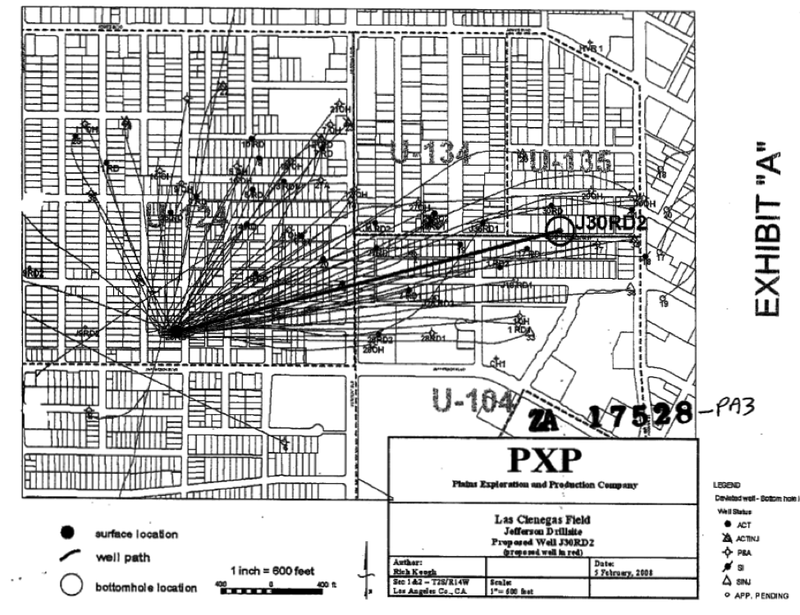This past Tuesday, President Obama placed an indefinite ban on oil drilling in parts of the Atlantic Ocean and most of the area of the Arctic Ocean controlled by the U.S. It's great news, given president-elect Donald Trump's suggestion that climate change may be something dreamt up by the Chinese and his effort to stock his administration with fossil-fuel-favoring and climate-change-skeptical folks.
Where polar bears might be able to breathe a little easier, however, neighborhood drilling around Los Angeles continues to be a problem.
Residents living around the AllenCo drill site, located on 23rd Street (near Figueroa), for example, might be pleased that the facility remains shuttered for the moment, but it could reopen some time in 2017. And new protections resulting from a June court order—requiring the installation of a monitoring system designed to protect public health, greater responsiveness to residents' complaints, and the positioning of an independent expert to shut down operations immediately when gas releases exceed safe levels before the facility can re-open—provide little comfort to those who remember how easily AllenCo shrugged off past violations and how many times the air quality regulatory body failed to enforce its own rules.
As community organizer Sandy Navarro makes clear in a newly-released spoken word video by STAND-LA, below, residents have vivid recall of how profoundly drilling operations impacted their health and their lives.
What's it like to have the oil industry as your neighbor? Our #SpokenWord community activist lays it down for environmental justice #WeSTAND pic.twitter.com/IiXZCON2gk
— STAND-LA (@STAND_LA) December 19, 2016
By the time AllenCo "voluntarily" suspended its drilling operations in late 2013, the company had already been the subject of 260 registered odor complaints dating back to 2010. The source of the complaints turned out to be the use of hydrochloric and phosphoric acids to unplug some of the site's wells after AllenCo bought the facility in 2009, as well as the sloppy maintenance of the facilities and the failure to adequately capture other noxious gases that accompanied that effort. Within a year, the L.A. Times reported, production had jumped from 4,178 barrels to 21,239 barrels in 2010—an increase of 400 percent—while complaints had skyrocketed from just eight the year before.
And yet it wasn't until Environmental Protection Agency officials toured the site and fell sick almost immediately in October of 2013 that residents' reports of nausea, nosebleeds, respiratory ailments, chronic fatigue, headaches, and dizziness finally got the attention they deserved.
The lawsuit City Attorney Mike Feuer filed in 2014 kept AllenCo from being able to resume operations, even after the South Coast Air Quality Management District (SCAQMD) issued the company a permit allowing it to do so. The lawsuit seems to also have been key in ensuring AllenCo would (in theory, at least) be held to a higher standard this time around. Even though the permit was issued this past May—a month prior to the June settlement of the suit—the SCAQMD notes in the accompanying cover letter that AllenCo now must meet 17 conditions to reopen the facility, not just the five it had to meet previously. [See the letter and permit, here.]
As part of the court order, AllenCo must also pay $1.25 million in civil penalties, half or more of which will be directed towards efforts to investigate pollution at other area oil fields.
Still, Los Angeles has yet to establish a robust process for monitoring and enforcement of drilling in the city or better communication between relevant city agencies and regulatory ones. And the city itself has struggled to keep track of its own set of conditions governing operations at that facility in the past. So much so that this past November, Councilmember Gil Cedillo put forward a motion to create ordinances that would make the process governing the consideration of drilling applications, the approval of projects, and the enforcement of regulations more coherent, more controlled, and more transparent. The motion also makes special mention of AllenCo and instructs the Planning Department to inform the company that the city has the authority to impose additional conditions and require further corrective measures, "in view of the numerous citations and violations" it has had in the past. [See motion here.]
The motion is intended to be taken up by the planning and land use committee but, as yet, has not been scheduled for consideration.






